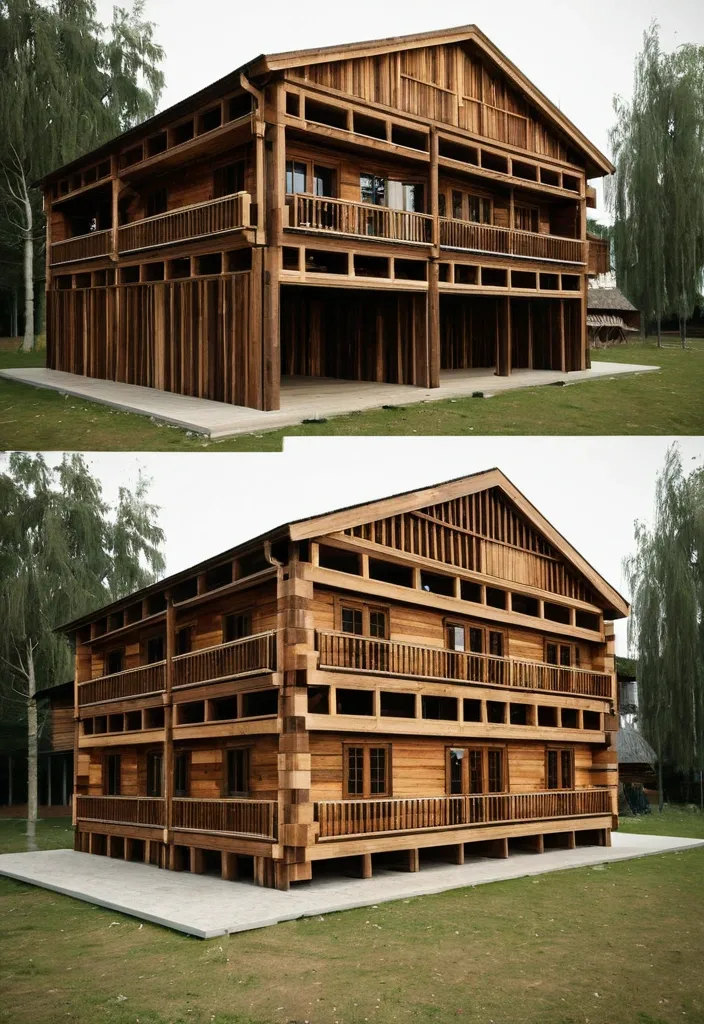Search Results for rot
Explore AI generated designs, images, art and prompts by top community artists and designers.

Vibrant streams of massive forming a text "2026" made of fluorescent white dots interference pattern , Starting from text "2026" transitions into a vortex that both shapes and fills the structure. A dynamic Elemental Entities spell in mid-transformation. The atmosphere is filled with swirling , horizontal scan dots , densely packed with composed entirely from twisted black and gray weird , has a semi-transparent quality akin to white fog. A 3D futuristic city in space , consists of towering skyscrapers enclosed under shimmering protective domes. ,

Vibrant streams of massive forming a text "2026" made of fluorescent black dots interference pattern , Starting from text "2026" transitions into a vortex that both shapes and fills the structure. A dynamic Elemental Entities spell in mid-transformation. The atmosphere is filled with swirling , horizontal scan dots , densely packed with composed entirely from twisted black and gray weird , has a semi-transparent quality akin to black fog. A futuristic city in space , orbiting of planet glowing with oceans and continents. The city consists of towering skyscrapers enclosed under shimmering protective domes. ,

A vast futuristic city in space , orbiting an Earth-like planet glowing with oceans and continents. The city consists of towering skyscrapers enclosed under shimmering protective domes , their lights twinkling like stars , massive white-smokes forming a text "2026" made of white-smokes appear above night sky , smoke drifting around the shape. In the Mists of Time. Ancient , colossal figures partially obscured by swirling , fireworks and fluorescent green colored fog. Emphasize a sense of scale and antiquity , with details hinting at forgotten power --ar 1:1 --v 7.0 ,

A vast futuristic city in space , orbiting an Earth-like planet glowing with oceans and continents. The city consists of towering skyscrapers enclosed under shimmering protective domes , their lights twinkling like stars , massive fireworks forming a text "2026" made of sparks appear above fantasy night sky , smoke drifting around the shape. Massive platforms extend outward , serving as docking stations where sleek spacecraft are moored. Smaller shuttles zip gracefully through the void , leaving glowing trails as they weave between the structures. The scene is illuminated by the planet’s reflected light , with distant stars and nebulae adding depth to the cosmic backdrop. Hyper-detailed , cinematic lighting , ultra-realistic , epic scale. ,

A futuristic sci-fi flying vehicle (no-wheel) , Rotating roller coaster track of Roller Coaster with artificial gravity , motion speed , 60th century orbital sci-fi fly vehicle running on interconnected by bioluminescent helium track , Roller Coaster built on multi layer cylinder surface with opposite side visible as sky , parks and buildings in curved perspective , sci-fi fly vehicle docking at central hub , 16-35mm wide-angle lens , f/8-f/11 deep focus , photo-realistic curved architecture , surreal gravity effects , ,

A Giant Alien City on a desert alien planet. The city is created out of a giant beer tin that is extremely elongated and has long teardrop shaped eye sockets. Part of the beer tin is removed where communications dishes and antenna protrude. The rest of the city rests inside the giant maw of the tin , with advanced , futuristic flying vehicles going in and out of the huge city beer tin and giant space ships hovering above the city. There are moons and space in the background. ,

Chef-d'œuvre photoréaliste en pied , une grotte abandonnée avec des murs en briques rouges , une vieille table verte avec des cartes de poker dessus , des pièces aussi , trois verres de whisky et une bouteille inversée de celui-ci , un cendrier avec une cigarette consumée dessus , lumière provenant d'un éclairage au gaz sur les murs ,

Chef-d'œuvre photoréaliste en pied , une grotte abandonnée avec des murs en briques rouges , une vieille table verte avec des cartes de poker dessus , des pièces aussi , trois verres de whisky et une bouteille inversée de celui-ci , un cendrier avec une cigarette consumée dessus , lumière provenant d'un éclairage au gaz sur les murs ,

сделай иллюстрации к этой истории Dann klopft er Luis anerkennend auf die Schulter und geht zurück zu seinen Freunden. Abends nimmt Mama Luis noch einmal ganz fest in den Arm. „Mein kleiner Schatz" , sagt sie , „ich bin froh , dass dir nichts Schlimmes passiert ist. Trotzdem bitte ich dich , ein bisschen vorsichtiger zu sein. Gott hat uns zwar versprochen , dass seine Engel bei uns sind und auf uns aufpassen , aber wir müssen auch vernünftig sein. Versprochen?" „Versprochen!" , murmelt Luis und kuschelt sich an Mama. „Was meint ihr" as meint ihr" , wendet Mama sich an die Zwillinge , „wollen wir Gott anke sagen , dass er Luis bei seinem Flug bewahrt hat?" Damit sind die beiden einverstanden. ,

A view into a dirty rubbish bin that has not been cleaned for years which contains a pair of stained and broken , stiletto heeled pink fluffy slippers surrounded by food waste that includes bones and rotting vegetables. The slippers are partly buried in the food waste , one slipper is on its side. ,

“Genera varias imágenes conceptuales de un dispositivo llamado KeyAI , un asistente de inteligencia artificial portátil del tamaño de una llave de coche. El dispositivo debe tener un diseño moderno , minimalista y tecnológico. Debe verse como un llavero inteligente , con una carcasa pequeña y ergonómica , un botón principal grande en la parte frontal y una mini cámara integrada en la parte superior o lateral. El tamaño total debe ser similar a un mando de coche , compacto y fácil de llevar en la mano. Incluye diferentes ángulos: vista frontal , lateral , trasera y en perspectiva. En algunas imágenes muéstralo sujeto por una mano humana para transmitir escala real. En otras imágenes muéstralo colgado en un llavero junto a unas llaves normales. El concepto debe transmitir que el dispositivo puede: escuchar voz , hablar mediante un pequeño altavoz , analizar lo que ve con su cámara , funcionar sin un móvil y ser extremadamente portátil. Añade pequeños detalles visuales como un LED indicador , micrófonos discretos y un puerto USB-C en la parte inferior. La iluminación debe ser clara y limpia , estilo fotografía de producto profesional , con fondo blanco o negro según la imagen. Calidad muy alta , estilo realista , 8K , prototipo industrial futurista.” ,

A steampunk-inspired sailboat battling a colossal mechanical squid in a stormy sea , where the sailboat is equipped with brass-plated hulls , intricate gears , and steam-powered engines. The giant squid , a marvel of steampunk engineering , has metallic tentacles adorned with pipes and glowing mechanical eyes. The rough seas are filled with frothing waves and steam , creating a chaotic and dynamic scene. The sky is dark and foggy , with occasional flashes of lightning illuminating the battle. The intricate details of the gears , pipes , and metallic textures are highlighted , and the overall atmosphere is one of retro-futuristic fantasy and adventure. ,

A powerful angelic figure emerges in a misty , urban environment , standing confidently in the center of the composition with a soft ethereal glow surrounding her. She possesses striking long , golden strands in the hair , elven metal elegant hairstyles , sholder protect elven elegant golden armor , Makeupaugmenting , tattoos wavy white hair that cascades elegantly over her shoulders. holds a Futuristic sci-fi axe , sleek high-tech design , glowing plasma edges , dark metallic alloy , cyberpunk aesthetics , embedded energy core in the hilt , intricate details with outcuts , display for plasma power and tube amplifier intricate , The angel sports a daring white ensemble , featuring a crop top with intricate cutouts and golden , silver skirt with chainsand intricatedetails , (white:1.2). Her outfit is complemented by thigh-high , form-fitting boots and flowing fabric at her back that mimics angelic feathers. Her large , majestic wings , formed from iridescent feathers , unfold gracefully behind her , accentuating her otherworldly presence. The background is blurred , suggesting an alleyway with minimal details , to emphasize her figure (focus:1.5). Soft beams of light filter down , creating rays that highlight the contours of her face , showing delicate features and an expression of confidence and serenity. Ensure that the lighting is dramatic , with soft contrasts enhancing the mood (lighting:1.2). Include some sparkle effects in the air for added magic and an ethereal feel. Avoid harsh shadows to maintain a soft , dreamlike atmosphere (negative: harsh shadows). ,

In a clinical veterinary corridor staffed by technicians wearing teal protective smocks and digital tablets , each ostrich pauses briefly within a transparent scanning arch that emits soft blue light as sensors capture heart rate , gait patterns , and temperature. A conveyor-like walkway gently moves the birds forward while robotic arms with padded ends perform non-contact feather sampling for DNA and disease checks. Stainless steel testing stations line the walls , with sample tubes , sealed containers , and diagnostic screens displaying real-time data under sharp industrial LED lighting. An overhead crane-mounted camera angle surveys the entire corridor , capturing the synchronized precision of staff and machines as the screening process flows without interruption. ultra-realistic , cinematic , professional , high-detail 4K , documentary style ,

Beer , staple beverage brewed primarily from barley , consumed daily with ritual and social importance , Sumer 2000 BCE , clay or ceramic cup filled with frothy liquid , Style: Matte Painting , detailed and atmospheric with subtle depth of field , White or Transparent Background , Full view , Side View , 4K. ,

Style: Evocative and painterly illustrations , inspired by concept art and cinematic stills. Focus on capturing emotion and atmosphere. The images should feel like key moments from a music video or a dramatic film. Emphasis on lighting , color , and composition to tell the story visually. Avoid heavy outlines and sharp comic book details. Think more "impressionistic" and less "literal." , Character Descriptions (Apply to all scenes): Aidan: A strong , elegant , and imposing werewolf alpha , appearing in his late 20s to early 30s in each era , with dark skin , dreadlocks , and piercing eyes with a wolf-like coloration. His gaze is intense and unwavering , conveying a sense of inner strength and protectiveness. Liaandra: A slender , elegant , and graceful vampire , appearing in her late 20s to early 30s in each era , with dark skin , long dark dreadlocks , and striking eyes with a captivating allure and a subtle reddish hue. She carries herself with quiet confidence and sophistication , hinting at a timeless beauty and hidden depths. , 2: Secret Garden (1910): Aidan and Liaandra share a secret rendezvous in a moonlit garden. Focus on the intimacy and vulnerability of the moment. They whisper promises under the stars , their faces illuminated by the soft moonlight. Details: Moonlit garden , blooming roses , whispered secrets , intimate atmosphere. Color Palette: Deep blues , purples , and greens , with silver moonlight highlighting their faces. ,

Style: Evocative and painterly illustrations , inspired by concept art and cinematic stills. Focus on capturing emotion and atmosphere. The images should feel like key moments from a music video or a dramatic film. Emphasis on lighting , color , and composition to tell the story visually. Avoid heavy outlines and sharp comic book details. Think more "impressionistic" and less "literal." , Character Descriptions (Apply to all scenes): Aidan: A strong , elegant , and imposing werewolf alpha , appearing in his late 20s to early 30s in each era , with dark skin , dreadlocks , and piercing eyes with a wolf-like coloration. His gaze is intense and unwavering , conveying a sense of inner strength and protectiveness. Liaandra: A slender , elegant , and graceful vampire , appearing in her late 20s to early 30s in each era , with dark skin , long dark dreadlocks , and striking eyes with a captivating allure and a subtle reddish hue. She carries herself with quiet confidence and sophistication , hinting at a timeless beauty and hidden depths. , 2: Secret Garden (1910): Aidan and Liaandra share a secret rendezvous in a moonlit garden. Focus on the intimacy and vulnerability of the moment. They whisper promises under the stars , their faces illuminated by the soft moonlight. Details: Moonlit garden , blooming roses , whispered secrets , intimate atmosphere. Color Palette: Deep blues , purples , and greens , with silver moonlight highlighting their faces. ,

Style: Evocative and painterly illustrations , inspired by concept art and cinematic stills. Focus on capturing emotion and atmosphere. The images should feel like key moments from a music video or a dramatic film. Emphasis on lighting , color , and composition to tell the story visually. Avoid heavy outlines and sharp comic book details. Think more "impressionistic" and less "literal." , Character Descriptions (Apply to all scenes): Aidan: A strong , elegant , and imposing werewolf alpha , appearing in his late 20s to early 30s in each era , with dark skin , dreadlocks , and piercing eyes with a wolf-like coloration. His gaze is intense and unwavering , conveying a sense of inner strength and protectiveness. Liaandra: A slender , elegant , and graceful vampire , appearing in her late 20s to early 30s in each era , with dark skin , long dark dreadlocks , and striking eyes with a captivating allure and a subtle reddish hue. She carries herself with quiet confidence and sophistication , hinting at a timeless beauty and hidden depths. , 1: First Encounter (1905): Aidan and Liaandra's eyes meet across a crowded ballroom in Vienna. Focus on the subtle connection and unspoken attraction. Liaandra is radiant in her gown , and Aidan is struck by her beauty. Use soft , warm lighting to create a romantic atmosphere. Details: Opulent ballroom , elegant gowns , soft lighting , subtle expressions. Color Palette: Warm golds , deep reds , creamy whites , with a touch of amber. ,

Style: Evocative and painterly illustrations , inspired by concept art and cinematic stills. Focus on capturing emotion and atmosphere. The images should feel like key moments from a music video or a dramatic film. Emphasis on lighting , color , and composition to tell the story visually. Avoid heavy outlines and sharp comic book details. Think more "impressionistic" and less "literal." , Character Descriptions (Apply to all scenes): Aidan: A strong , elegant , and imposing werewolf alpha , appearing in his late 20s to early 30s in each era , with dark skin , dreadlocks , and piercing eyes with a wolf-like coloration. His gaze is intense and unwavering , conveying a sense of inner strength and protectiveness. Liaandra: A slender , elegant , and graceful vampire , appearing in her late 20s to early 30s in each era , with dark skin , long dark dreadlocks , and striking eyes with a captivating allure and a subtle reddish hue. She carries herself with quiet confidence and sophistication , hinting at a timeless beauty and hidden depths. , 2: Secret Garden (1910): Aidan and Liaandra share a secret rendezvous in a moonlit garden. Focus on the intimacy and vulnerability of the moment. They whisper promises under the stars , their faces illuminated by the soft moonlight. Details: Moonlit garden , blooming roses , whispered secrets , intimate atmosphere. Color Palette: Deep blues , purples , and greens , with silver moonlight highlighting their faces. ,

Style: Evocative and painterly illustrations , inspired by concept art and cinematic stills. Focus on capturing emotion and atmosphere. The images should feel like key moments from a music video or a dramatic film. Emphasis on lighting , color , and composition to tell the story visually. Avoid heavy outlines and sharp comic book details. Think more "impressionistic" and less "literal." , Character Descriptions (Apply to all scenes): Aidan: A strong , elegant , and imposing werewolf alpha , appearing in his late 20s to early 30s in each era , with dark skin , dreadlocks , and piercing eyes with a wolf-like coloration. His gaze is intense and unwavering , conveying a sense of inner strength and protectiveness. Liaandra: A slender , elegant , and graceful vampire , appearing in her late 20s to early 30s in each era , with dark skin , long dark dreadlocks , and striking eyes with a captivating allure and a subtle reddish hue. She carries herself with quiet confidence and sophistication , hinting at a timeless beauty and hidden depths. , 1: First Encounter (1905): Aidan and Liaandra's eyes meet across a crowded ballroom in Vienna. Focus on the subtle connection and unspoken attraction. Liaandra is radiant in her gown , and Aidan is struck by her beauty. Use soft , warm lighting to create a romantic atmosphere. Details: Opulent ballroom , elegant gowns , soft lighting , subtle expressions. Color Palette: Warm golds , deep reds , creamy whites , with a touch of amber. ,

Style: Evocative and painterly illustrations , inspired by concept art and cinematic stills. Focus on capturing emotion and atmosphere. The images should feel like key moments from a music video or a dramatic film. Emphasis on lighting , color , and composition to tell the story visually. Avoid heavy outlines and sharp comic book details. Think more "impressionistic" and less "literal." , Character Descriptions (Apply to all scenes): Aidan: A strong , elegant , and imposing werewolf alpha , appearing in his late 20s to early 30s in each era , with dark skin , dreadlocks , and piercing eyes with a wolf-like coloration. His gaze is intense and unwavering , conveying a sense of inner strength and protectiveness. Liaandra: A slender , elegant , and graceful vampire , appearing in her late 20s to early 30s in each era , with dark skin , long dark dreadlocks , and striking eyes with a captivating allure and a subtle reddish hue. She carries herself with quiet confidence and sophistication , hinting at a timeless beauty and hidden depths. , 1: First Encounter (1905): Aidan and Liaandra's eyes meet across a crowded ballroom in Vienna. Focus on the subtle connection and unspoken attraction. Liaandra is radiant in her gown , and Aidan is struck by her beauty. Use soft , warm lighting to create a romantic atmosphere. Details: Opulent ballroom , elegant gowns , soft lighting , subtle expressions. Color Palette: Warm golds , deep reds , creamy whites , with a touch of amber. ,

Aidan: Alfa lobisomem forte , elegante , imponente , 25-35 anos (cada era) , pele escura , dreadlocks , olhos penetrantes lupinos , olhar intenso , protetor , inspira respeito. Liaandra: Vampira esbelta , elegante , graciosa , 25-35 anos (cada era) , pele escura , dreadlocks longos escuros , olhos marcantes cativantes tom avermelhado , confiança silenciosa , sofisticação. 1: 1º Encontro (1905): Baile Viena luxuoso , olhares cruzam , Liaandra (vestido deslumbrante) , Aidan (traje formal) , valsa. Detalhes: Salão opulento , vestidos elegantes. Cores: Dourados , vermelhos , brancos cremosos. ,

Aidan: Alfa lobisomem forte , elegante , imponente , 25-35 anos (cada era) , pele escura , dreadlocks , olhos penetrantes lupinos , olhar intenso , protetor , inspira respeito. Liaandra: Vampira esbelta , elegante , graciosa , 25-35 anos (cada era) , pele escura , dreadlocks longos escuros , olhos marcantes cativantes tom avermelhado , confiança silenciosa , sofisticação. 1: 1º Encontro (1905): Baile Viena luxuoso , olhares cruzam , Liaandra (vestido deslumbrante) , Aidan (traje formal) , valsa. Detalhes: Salão opulento , vestidos elegantes. Cores: Dourados , vermelhos , brancos cremosos. ,

woman in bikini , art by miyazaki and Ian McQue and Akihiko Yoshida and Katsuya Terada , happy , art by Joan Miró , whimsical , cinematic lighting , real... , galaxies exploding , sketch of alien faces , beauty , wearing white gothic_plate_armour , quality render style of Masamune Shirow and Tsuaii , art by Paul Cézanne , Light Painting , art by Paolo Uccello , art by Francisco De Goya , art by Michelangelo Buonarroti , art by Sandro Botticelli , art by Andrea Mantegna ,

A slender , graceful vampire , appearing in her late 20s to early 30s with dark skin , long dark dreadlocks , and striking eyes with a subtle reddish hue , walks through a vibrant city at night wearing a stylish and sensual dress. The scene is rendered in a graphic novel style , with bold lines and dramatic shadows , reminiscent of Artstation illustrations. Neon lights illuminate the wet streets , reflecting in puddles on the pavement. She exudes an air of quiet confidence and timeless beauty. A strong , imposing werewolf with dark skin , dreadlocks , and wolf-like eyes walks protectively beside her. The overall color palette is rich and saturated , with deep blues , purples , and reds dominating , creating a sense of urban energy and their shared journey. ,

A slender , graceful vampire , appearing in her late 20s to early 30s with dark skin , long dark dreadlocks , and striking eyes with a subtle reddish hue , and a strong , imposing werewolf walk together through a vibrant city at night. She is wearing a stylish and sensual dress. The scene is rendered in a graphic novel style , with bold lines and dramatic shadows , reminiscent of Artstation illustrations. Neon lights illuminate the wet streets , reflecting in puddles on the pavement. She exudes an air of quiet confidence and timeless beauty as she walks beside him. He , with his dark skin , dreadlocks , and wolf-like eyes , walks protectively beside her. The overall color palette is rich and saturated , with deep blues , purples , and reds dominating , creating a sense of urban energy and their shared journey. ,



